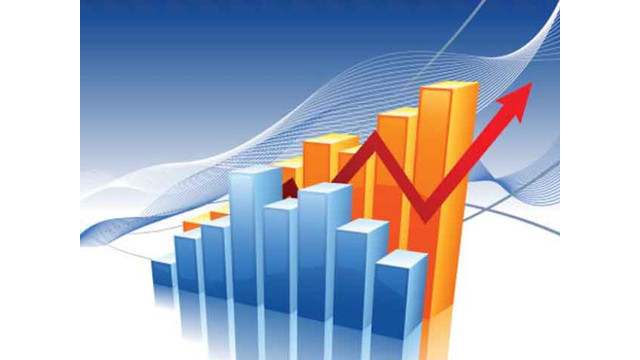Accounting
Inflation Drops in U.S.
U.S. inflation broadly slowed in October, which markets cheered as a strong indication that the Federal Reserve is done hiking interest rates.
Nov. 15, 2023

By Augusta Saraiva, Bloomberg News.
(via TNS)
U.S. inflation broadly slowed in October, which markets cheered as a strong indication that the Federal Reserve is done hiking interest rates.
The so-called core consumer price index, which excludes food and energy costs, increased 0.2% from September, according to government figures. Economists favor the core gauge as a better indicator of underlying inflation than the overall CPI. That measure was little changed, restrained by cheaper gasoline.
Despite some bumps in recent months, inflation has settled substantially from a 40-year high reached last year. That’s led several Fed policymakers to signal that they may be done raising interest rates, but Chair Jerome Powell has repeatedly stressed the central bank could hike again if needed.
The S&P 500 index opened higher and Treasury yields declined significantly as traders essentially wiped out the chance of another rate hike. They also pulled forward bets of when the Fed will first cut rates into the first half of next year.
“The bar for further rate hikes is getting higher and higher,” Wells Fargo & Co. Chief Economist Jay Bryson said on Bloomberg TV after Tuesday’s report. “This is a good start in that journey, but you would need to see a few more months of 0.2 before saying mission accomplished.”
The Bureau of Labor Statistics figures reflected increases in rent and personal-care products and services, as well as health insurance due to a methodological change in how the government calculates it. Meanwhile, airfares and used-car prices declined.
Shelter prices, which make up about a third of the overall CPI index, climbed 0.3%, half the prior month’s pace. Economists see a sustained moderation in this category as key to bring core inflation down to the Fed’s target. A key measure of rent as well as hotel stays stepped down.
Excluding housing and energy, services prices climbed 0.2% from September and 3.7% from a year ago — the lowest in nearly two years — according to Bloomberg calculations. While Powell and his colleagues have stressed the importance of looking at such a metric when assessing the nation’s inflation trajectory, they compute it based on a separate index.
Unlike services, a sustained decline in the price of goods has been providing some relief to consumers in recent months. So-called core goods prices, which exclude food and energy commodities, fell for a fifth month.
Even so, household budgets are still strained in many ways. Grocery prices rose by the most since July, reflecting higher costs for basics like meat, milk and bread. Motor-vehicle insurance also rose.
Americans’ wages, when adjusted for inflation, rose for the first time in three months in October. Taken with the easing in price pressures, that may offer some relief for President Joe Biden, whose approval rate stands at the lowest level in over a year.
Looking ahead, the direction of the labor market will be key to how long Americans can sustain their spending, which has kept inflation elevated and powered broader growth. The unemployment rate rose in October to the highest level since early 2022, while measures of consumer sentiment deteriorated.
If U.S. lawmakers fail to avert a government shutdown by the end of this week, Tuesday’s release may be the last gold-standard inflation report private economists and policymakers will have access to for awhile. BLS, as well as other agencies like the Bureau of Economic Analysis and the Census Bureau, would halt data releases in the event of a closure.
The renewed threat of a shutdown — less than two months after the U.S. skirted another one — is looming over the nation’s economic trajectory at a time when Fed officials are being especially careful when assessing whether further rate increases are needed.
What Bloomberg Economics says…
“October’s surprisingly soft core CPI reading will boost Fed officials’ confidence that rates are sufficiently restrictive. Still, core CPI readings will need to continue on this path for several more months for the FOMC to declare a definitive end to the rate-hike cycle.”
—Anna Wong and Stuart Paul. To read the full note, click here
(With assistance from Kristy Scheuble, Reade Pickert, Matthew Boesler, Edward Harrison and Marien Lopez Medina.)
___
©2023 Bloomberg L.P. Visit bloomberg.com. Distributed by Tribune Content Agency, LLC.
